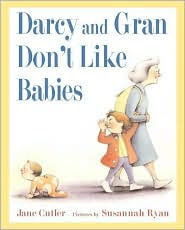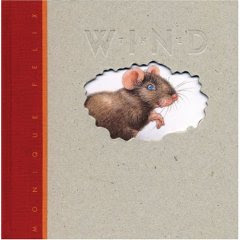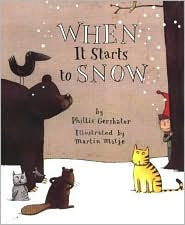
My husband and I always planned that our son would eventually have a brother or sister, so we've always tried to keep a range of sibling related books in our regular rotation. My mom discovered this one at the library, by chance, and it's become my favorite book to deal with the issue.
In reading reviews on Amazon.com on various books on the sibling issue it seems that many parents are critical of the books that include a main character who is upset or angry about the arrival of a baby. I can appreciate that you don't want to prepare your child for the baby to be a negative experience - on the other hand, I believe that the older child will have feelings of anger, jealousy, and fear, and normalizing those feelings is one of the values of books. We recently had Ella and the Naughty Lion out from the library. In it, Ella discovers that a lion slipped in when her baby brother arrived. The lion acts out and at times is very naughty. After reading it a couple of times I realized the lion was an analogy for Ella's behavior after her sibling's arrival - but it seems a bit too vauge to be very effective for small children. Although maybe I'm not giving kids enough credit.
This is all a long preamble for Darcy and Gran, which I think is perfect. In the beginning we see a very dejected Darcy standing in the shadows as her parents delightedly play with the new baby. The text simply states, "Darcy didn't like the baby." She goes on to report to everyone that she doesn't like the baby, to which everyone has a reply. Her mother tells her the baby is like Darcy was a long time ago; her father tells her that she'll like the baby better later; her doctor tells her she's not supposed to like the baby; and the neighbor tells her, "Of course you do." Darcy is unsatisfied with all these answers, until she tells her Gran that she doesn't like the baby - Gran says, "Me neither...I never did like babies."
Darcy and Gran head out for a day at the park. On the way home, Darcy recounts to her Gran all the things people said about Darcy not liking the baby. Gran agrees with Darcy's mom and dad. She has beautiful interpretations of the doctor and the neighbor - Gran explains that the doctor means it's okay if Darcy doesn't like the baby, the neighbor means that deep down Darcy does like the baby.
By their return home Darcy seems more accepting of the state of things, with her Gran's perspective. The final page shows Darcy and the baby sitting on Gran's lap.
The illustrations do a fantastic job of mimicing Darcy's particular point of view. The opening picture with Darcy in the shadows, looking sad and lonely suggests her state of mind - the early pages show her parents lavishing attention on the baby, literally with their backs turned to Darcy. The drawings of Darcy are very expressive: it would be a great exercise with a child to ask at different points how Darcy is feeling.
Towards the end of the book there are a series of drawings that indicate memories or imagined future events - they are painted with lighter, pale colors in bubbles with wavy edges, to set the apart from the rest of the illustrations.
Then, at the end, the pictures now reflect Darcy's improved feelings about her family dynamic. As she and Gran return from the park, baby and Dad are waiting at the door for them. On the next page Mom is on hand to give Darcy a hug (while Dad brings dinner to the table - nice touch). And in the next two-page picture, Darcy, Gran, Mom and Dad look at photo albums together as the baby bangs on pots and pans nearby.
I really like the balance the author and illustrator strike. Darcy is allowed to feel and express her dissatisfaction with the baby. No-one punishes her or discourages her. In fact, Gran totally validates her, but is also able to help her out of her narrow thinking. The unique grandchild-grandparent relationship offers some perspective Darcy can't accept from anyone else.



